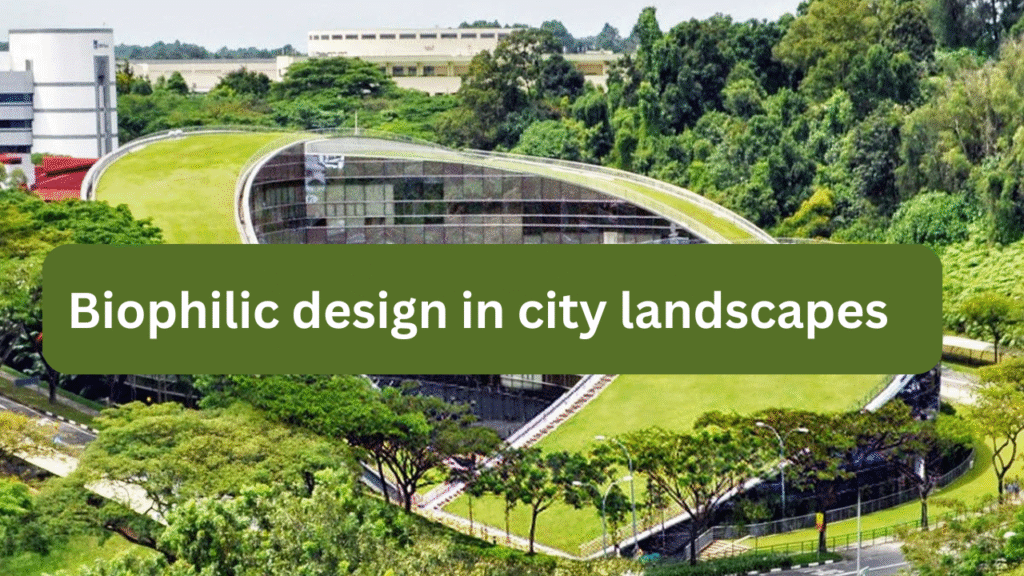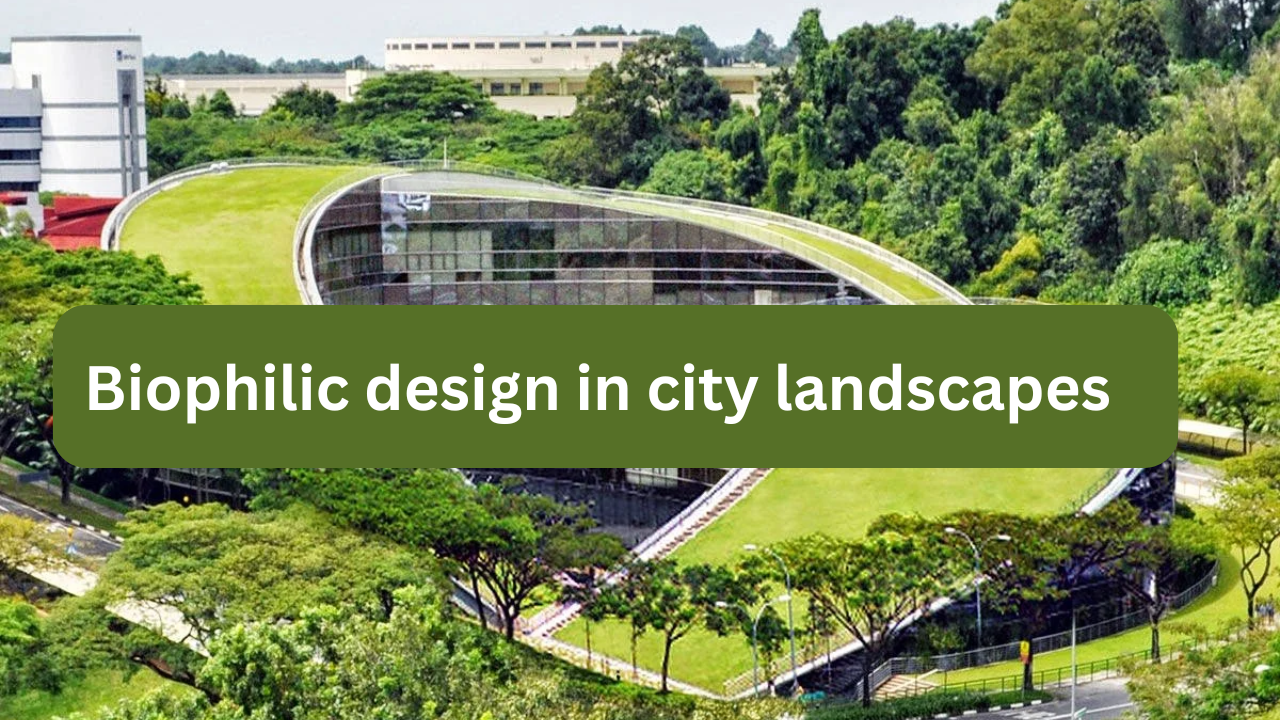
As cities grow denser and faster, urban environments often alienate residents from nature. Enter biophilic design—an architectural and planning philosophy that seeks to reconnect people with the natural world through thoughtful integration of natural elements into built spaces. From parks woven into residential towers to offices flooded with natural light and vegetation, biophilic design is reshaping urban life to be healthier, more humane, and environmentally responsive.
Overview Table: Core Elements of Biophilic Design in City Landscapes
| Biophilic Element | Purpose in Urban Context |
|---|---|
| Natural Light & Ventilation | Enhances well-being and reduces energy consumption |
| Green Walls & Roofs | Adds biodiversity and improves air quality |
| Water Features | Reduces stress and creates microclimates |
| Urban Forests & Tree Canopy | Lowers temperatures and enhances biodiversity |
| Nature-Inspired Patterns | Creates emotional comfort and aesthetic pleasure |
| Public Green Spaces | Builds community connection and social interaction |
1. What Is Biophilic Design?
Biophilic design is based on the idea that humans have an innate affinity for nature. Coined from “biophilia” (love of life or living systems), the approach focuses on incorporating natural materials, light, vegetation, and even sensory experiences into modern spaces. It’s not just about adding plants—it’s about designing with nature in mind.
In city landscapes, this means:
- Creating opportunities for visual and physical access to nature
- Designing outdoor and indoor spaces to mimic natural systems
- Integrating sustainability into aesthetics and function
2. Benefits of Biophilic Urban Design
Biophilic principles go beyond beautification—they generate measurable social, psychological, and environmental benefits.
Health and Well-being
- Reduces stress, anxiety, and mental fatigue
- Enhances cognitive function and creativity
- Lowers blood pressure and improves mood
Environmental Resilience
- Supports stormwater absorption and air purification
- Reduces urban heat island effect
- Promotes biodiversity within dense cities
Social Cohesion
- Encourages public interaction and community engagement
- Enhances sense of safety and belonging
- Increases property values and urban desirability
3. Biophilic Strategies for Urban Landscapes
City planners and architects are now embedding biophilic elements at multiple levels, from street-level interventions to architectural masterplans.
A. Vegetation Integration
- Green roofs and vertical gardens on buildings
- Tree-lined avenues and native plant corridors
- Edible landscapes and urban agriculture
B. Natural Materials
- Use of wood, stone, bamboo, and clay in public structures
- Organic forms and textures inspired by natural environments
C. Water and Soundscapes
- Reflecting pools, fountains, and small ponds
- Soundscapes of flowing water integrated into busy areas for calmness
D. Sunlight and Fresh Air
- Large windows and open designs in public transport, offices, and malls
- Passive ventilation systems and orientation-sensitive architecture
E. Nature-Inspired Patterns
- Biomimicry in design: shapes of leaves, fractals, honeycombs in structures
- Color palettes inspired by earth, sky, and plant life
4. Global Examples of Biophilic Urban Design
Cities around the world have embraced this philosophy in creative ways:
| City | Biophilic Feature |
|---|---|
| Singapore | Gardens by the Bay, green skyscrapers, rainwater parks |
| Milan | Bosco Verticale – vertical forest residential towers |
| Portland (USA) | Green street projects and urban forest initiatives |
| Melbourne | Urban forest strategy with canopy increase goals |
| Tokyo | Pocket parks and rooftop gardens in commercial areas |
5. Challenges in Implementing Biophilic Design
Despite the proven benefits, integrating biophilic elements comes with logistical and systemic challenges:
- Cost: Initial installation of green infrastructure can be high
- Maintenance: Requires long-term planning and funding
- Space Constraints: Dense cities must creatively retrofit limited spaces
- Policy Barriers: Zoning laws may restrict vertical greenery or open space ratios
- Expertise: Needs collaboration among ecologists, architects, and urban planners
Solutions lie in policy incentives, community involvement, and public-private partnerships that prioritize nature as infrastructure.
Comparison Table: Traditional vs. Biophilic Urban Design
| Aspect | Traditional Design | Biophilic Design |
|---|---|---|
| Primary Materials | Concrete, steel, glass | Natural materials and textures |
| Human-Nature Connection | Minimal or absent | Strong and intentional |
| Mental Health Impact | Often overlooked | Prioritized and supported |
| Aesthetic Approach | Functional and minimal | Organic and immersive |
| Temperature Control | Reliant on HVAC | Uses shade, wind, and water features |
| Public Space Use | Efficiency-driven | Wellness- and community-driven |
3 Best One-Line FAQs
1. How does biophilic design improve urban living?
It enhances mental and physical health, increases sustainability, and makes cities more livable.
2. Can biophilic design be applied to existing buildings?
Yes, retrofitting with green walls, skylights, and natural materials is both viable and impactful.
3. Is biophilic design expensive to implement in cities?
While upfront costs may be higher, long-term health and energy savings outweigh them.
Conclusion
Biophilic design is not a luxury—it’s a necessity for the sustainable evolution of cities. As the urban world faces rising stress, pollution, and climate risks, integrating nature into every aspect of the built environment offers a restorative, resilient, and deeply human solution. Whether through a moss-covered wall, a pocket park, or a sunlit community center, biophilic design invites us to reclaim our connection to the natural world, one space at a time.

